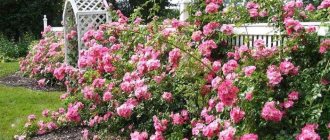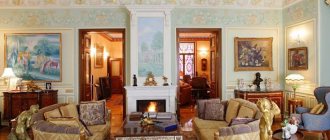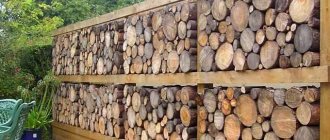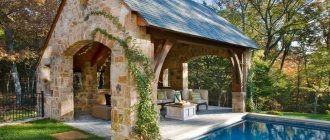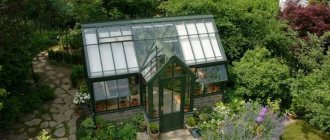A Mediterranean style garden can be described as: sunny, warm, bright, fragrant, natural and comfortable.
Definitely, such a garden is created for enjoying life, relaxation and pleasure. Since the Mediterranean style arose in a hot climate, it is natural that such gardens have many shaded areas, cozy patios, pools and terraces, flower beds with herbs and climbing plants.
The Mediterranean is a fairly vast region, so gardens of this style often differ from each other.
If you have been dreaming of such a fragrant corner for a long time. And we would like to learn in more detail about what such gardens are like, what kind of plants are grown there and what techniques designers use to achieve resemblance to the natural zone of the Mediterranean, then our efforts were not in vain. Come in, it will be interesting here!
Italian garden
For example, gardens in Italy have a classic look and are based on a strict layout. It uses clear geometric shapes, symmetry, straight paths and regularly shaped ponds.
The garden is divided into different zones, which are separated from each other by hedges or rectangular pergolas with climbing roses, clematis, tecoma and other climbing plants.
Italian gardens are usually located on complex hills, on terraces, and have retaining walls and paths made of natural stone. Various decorative elements are also created from stone: fountains, fences, grottoes, stairs, benches and balustrades.
Columns, stone flower containers or antique amphorae are often placed in a Mediterranean garden, and some surfaces are decorated with bas-reliefs and sculptures. Here you can find evergreen boxwoods and thujas in the form of spirals or balls. The art of topiary is characteristic of many classical gardens.
Mediterranean Sea on site
If the nearest sea is a couple of thousand kilometers away from you, and you want to have some water here and now, then you need to organize a small reservoir on your site. It can be an artificial pond or an inflatable pool, but it is better to make a fountain, stream, waterfall or cascade. The gentle murmur of water can immerse you in the atmosphere of the Mediterranean and relaxation.
If space, climate and finances allow, you can also build a pool and even equip it with lighting. In this case, your garden will be indistinguishable from the romantic corners of the far south.
Mediterranean garden Provence
Mediterranean gardens in France have a free design, typical of Provence and country styles. There are no clear lines, the plants are arranged naturally, and the delightful aroma of lavender and herbs spreads over the garden.
Lavender is everywhere in such a garden: in containers and flower beds, along paths and instead of a lawn, and is also a wonderful companion for roses and other plants.
Garden furniture, most often, is elegant forged: screens for climbing plants, bridges, fences, chairs and benches with soft cushions. Can you guess what embroidery decorates these pillows? Of course, these are images of lavender and roosters, which are also symbols of Provence.
Region
The Mediterranean basin has a long history as an area inhabited by humans. Some of the world's most important and powerful civilizations rose and flourished in this region. These include the Minoan, Greek, Roman and Byzantine civilizations, among others. Various architectural styles flourished in this region, which influenced architecture throughout the world. However, despite this rich structural heritage, the Mediterranean region continues to be an understudied area in terms of regional architecture and its evolution.
There is absolutely no doubt that the architecture of the Mediterranean coast has always had a number of local and regional influences, due to which the architectural style of one region differs from another. But at the same time, it is also true that there are certain characteristics that are common among structures and buildings throughout the region, perhaps due to the geographical location of the region, and/or climatic conditions. In other words, a structure located along the Mediterranean coast may require certain architectural elements to be present in it. These elements then become the hallmarks of the style.
It is important to note that Mediterranean architecture as we know it today may actually refer to Mediterranean Renaissance architecture, a style that has primarily witnessed some of the most grandiose structures in Russia, along with several other European countries. These structures are essentially combined with regional style, some of the most recognizable elements found in buildings along the Mediterranean coast. Because these elements are often huge and bulbous, they also have the most imposing appearance, so much so that Mediterranean becomes a brand rather than a style of architecture.
[Return to contents]
Greek style garden
To convey the atmosphere of Greece, use azure, dazzling white, olive, and terracotta colors in your garden design. If there is a need to update garden buildings or furniture, feel free to use paints of these shades.
Residents of Greece spend a lot of time outdoors: socializing, dining, relaxing. Therefore, they equip their garden accordingly: there are many cozy seating areas located on terraces, patios are often protected from the sun by pergolas and awnings, and the set of garden furniture always includes a large dining table and armchairs.
The Mediterranean style of such a garden will be emphasized by wicker furniture made of rattan, bamboo or wicker.
Decorate the windows of summer garden buildings with light, light curtains or blinds; they will protect from the sun during the midday hours.
The basis of your garden can be conifers (arborvitae, junipers, boxwoods). Against the background of conifers, other flowers and plants of bright colors and shapes look great.
If some of the conifers in your climate do not overwinter outdoors, use container plants. This will allow them to be preserved in the winter, and container plants can also be rearranged at will and quickly change the look of the garden.
Spicy herbs will complete the decoration:
- onion
- garlic
- pepper
- sorrel
- saffron
- coriander
- celery
- salad
- lovage
- basil
They can be planted in flower beds, in flowerpots, in hanging flowerpots, and even, collected in bunches, hung to dry on windows or buildings.
Plastic garden furniture
It has increased resistance to sunlight, precipitation and temperature changes, and also looks very modern:
Domitalia Phantom
garden furniture made of molded polyethylene, an environmentally friendly and non-flammable material.
Magis Spun
spinning chair .
Moroso O-Nest
chairs made of painted polyethylene. The neat sloping back, high shaped armrests and a seamless base that flows seamlessly into the seat create a fashionable and practical concept, ideal for outdoor use.
In the photo: designer furniture made from high-tech plastic Vondom .
Tonon Sundance
chairs . The design of the model combines straight lines and extravagant shapes.
Kartell
furniture . High-tech flexible and rigid plastic is the main material used in the production of Kartell furniture.
In the photo: chairs from Ron Arad Moroso Ripple Chair with a stunning curly back that imitates the infinity sign, but in a new, unexpected interpretation.
Flowers and plants
Mediterranean plants immediately create an incredible southern atmosphere and fill the air with the aromas of lavender, fragrant herbs and pine needles. Selecting flowers and plants for your garden:
Conifers - thuja Smaragd, cypress, boxwood, Virginia juniper and rock. Various topiary forms of conifers (ball, spiral, cone).
Container plants - lemon, orange, fig, olive, pomegranate, oleander, bay laurel, palm tree. In our gardens, these plants do not overwinter in open ground, but they are often used as container plants.
Lianas - climbing roses, wisteria, clematis, tekoma (campsis), virgin grapes, several varieties of honeysuckle, bougainvillea. You cannot do without these plants when creating shady areas in the garden. Thecoma (campsis) is noteworthy - this vine is very powerful, its lashes reach several meters in length and are able to hide any large surface or structure. Its bright orange and yellow bell flowers are unforgettable.
Ornamental shrubs - barberry (common, Thunberga), holly mahonia, spirea, forsythia, weigela, David's buddleia.
Flowers and herbs - roses, cannas, lavender, spring bulbs (narcissus, hyacinth, crocus), grayish-blue carnation, cyclamen, fescue, woodweed, cineraria maritima, woolly chlorine, sage, lupine, delphinium.
Herbs are a special element of the Mediterranean garden - basil, thyme, lavender, hyssop, oregano, thyme, marjoram, sage, rosemary.
The most popular plants in a Mediterranean garden will always be palms, pistachio, olive and citrus trees.
Garden decor
Notable decorative elements of a Mediterranean garden:
- furniture made of stone and rattan
- wrought iron benches with soft cushions
- ceramic flowerpots
- antique statues
- sundial
- pool, stream, fountain
- pergola
- paths and finishing made of stone, marble and pebbles
- colored mosaic, colored glass
- wicker and metal fruit baskets


